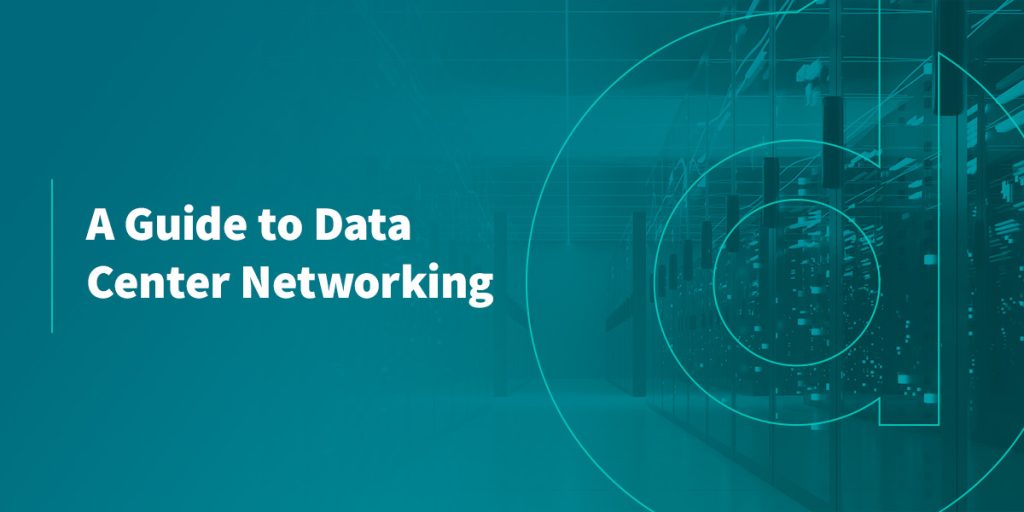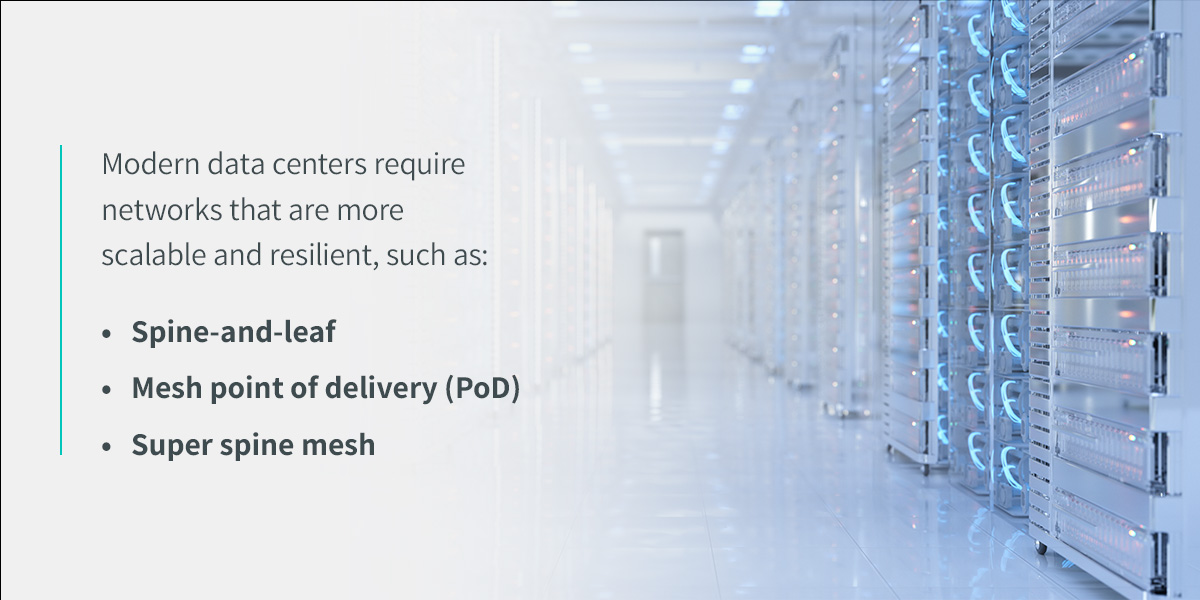
A Guide to Data Center Networking
Today’s data centers are radically different from the computer rooms of the 1940s, and they have very different needs. Until the rise of the internet and client-server computing in the ’90s, data centers were largely reserved for military operations.
Now, with businesses in every industry depending on fast internet connectivity and round-the-clock uptime, data centers have become massive operations with some of the most advanced technology available. For example, hyperscale data centers house thousands of servers in multiple buildings while maintaining extremely high performance.
That’s what makes data center networking so important. Implementing the right data center networking solution provides the resiliency and performance needed for excellent service to your clients and to future-proof your operations.
What Is Data Center Networking?
Data center networking refers to how all of the physical and networking resources in a data center interconnect. Many modern data centers utilize a full-stack networking architecture, which connects everything from the edge to the cloud.
This fully interconnected architecture is a stark change from the traditional networking models of previous generations, which involved clients connecting to monolithic servers that rarely interacted. Now, due to the increasing usage of virtualization, low-latency server-to-server communication is critical.
Virtualization plays an enormous role in data center operation and network management. Applications that would previously have required hardware can now be developed as software programs and installed on any device. Instead of being the basis for the program, the hardware’s main purpose now is to provide the resources the software needs to function properly.
Virtualization also separates the control and forwarding planes, making traffic direction and resource usage more efficient through the network. It allows for rapid scalability and network deployment, so data centers have more agility moving forward.
Why Is Data Center Networking Important?
Modern data centers rely heavily on server-to-server communication to provide the services and data the client needs. The rise of microservices architecture is an excellent example. Each microservice is its own block you can use and modify independently of all other microservices. However, because each microservice can be used in multiple applications, its data must be easily transferable between servers.
The most advanced data center networking platforms adjust resource allocation dynamically to meet users’ changing needs. This enables the network to use micro-segmentation to deliver critical services for applications such as automation and granular security.
Other advantages of modern data center networking include:
- Reliability: Data center networking architectures mesh creates network resiliency by connecting every higher-tier switch to every lower-tier switch. Even if a high-tier switch goes down, server-to-server communication is still possible.
- Granular security: Data center networking platforms often feature integrated security controls such as IDS/IPS. These controls can identify and stop threats from entering your network, protecting your data center and helping you remain compliant with important security standards.
- High performance: Data center networking relies on automation to provide networking services and infrastructure, which enables high speed and agility.
- Scalability: Modern data centers are massive facilities that can house hundreds or even thousands of servers and other networking devices. Unlike traditional architecture, a robust modern data center network enables you to add more virtual and physical servers as your business grows with minimal disruption.
- Single pane of glass: A fully connected data center network consolidates all your resources at every level, enabling you to manage everything from one centralized console. A strong architecture also provides global visibility into every system in your network so you can easily troubleshoot if issues arise.
EXPLORE Networking professional services
How Does Data Center Networking Work?

A data center network connects servers to each other using network switches and cables. While many of these components are becoming increasingly virtualized, some are still dependent on physical hardware and infrastructure.
Traditional data center networks use a three-tier architecture that, while functional at the time, can’t withstand the demands of cloud computing and advanced applications like search.
Modern data centers require networks that are more scalable and resilient, such as:
- Spine-and-leaf: This topology, also known as Clos topology, divides networking switches into two groups — the higher-tier switches are spines, and the lower-tier switches are leaves. Each leaf connects to every spine, forming a mesh where traffic flows from leaf to spine to the destination leaf.
- Mesh point of delivery (PoD): Similar to spine-and-leaf, a mesh PoD interconnects multiple leaf switches with centralized spine switches to support low-latency traffic flow from server to server.
- Super spine mesh: This architecture is common in hyperscale data centers that need to deploy massive infrastructures servicing huge quantities of data. It adds another super spine tier to the basic spine-and-leaf configuration to support more spine switches, adding resiliency and enhancing performance.
Typically, the right architecture for a data center depends on its size and scale. For example, how many servers does it contain, and what are the service requirements for a usual day of operation? The larger the center, the more complex the connections.
What Do You Need for Data Center Networking?
The essential components for data center networking include:
- Networking hardware: Modems, routers, cables and switches enable communication and data transfer between servers and users. Although bare metal servers are still common for specific applications, networking hardware is becoming increasingly virtualized.
- Security: Security protocols, such as encryption algorithms, firewalls and IDS/IPS, detect, eliminate and prevent cybersecurity incidents from affecting components within your network. These protocols are also important for staying compliant with industry and government regulations such as ISO 27001 and FedRAMP.
- Addressing scheme: An IP4 or IP6 addressing scheme is essential for connecting applications and users to specific networks or hosts.
- Internet connectivity: Without a strong internet connection, virtualization and data center networking is impossible. Any type of connection will suffice, including DSL, optical, wireless and satellite.
- Automation: Many modern data center networks rely on automated technology to perform time-consuming tasks like programming networks and balancing workloads. This technology is faster and more reliable than human operators, which helps provide a much higher degree of agility and efficiency.
Combining the right components in the right topology helps ensure consistency in applying data usage policies. An architecture that emphasizes homogeneity, such as a spine-and-leaf structure, ensures your servers are only a short jump from one another and keeps availability high.
Build Your Data Center Network With DataSpan
Since 1974, DataSpan has worked diligently in the data center industry, gaining the expertise and resources to help you build a custom networking solution that enhances performance and boosts availability. Contact us online for data center networking tips or more information about how to partner with us.








